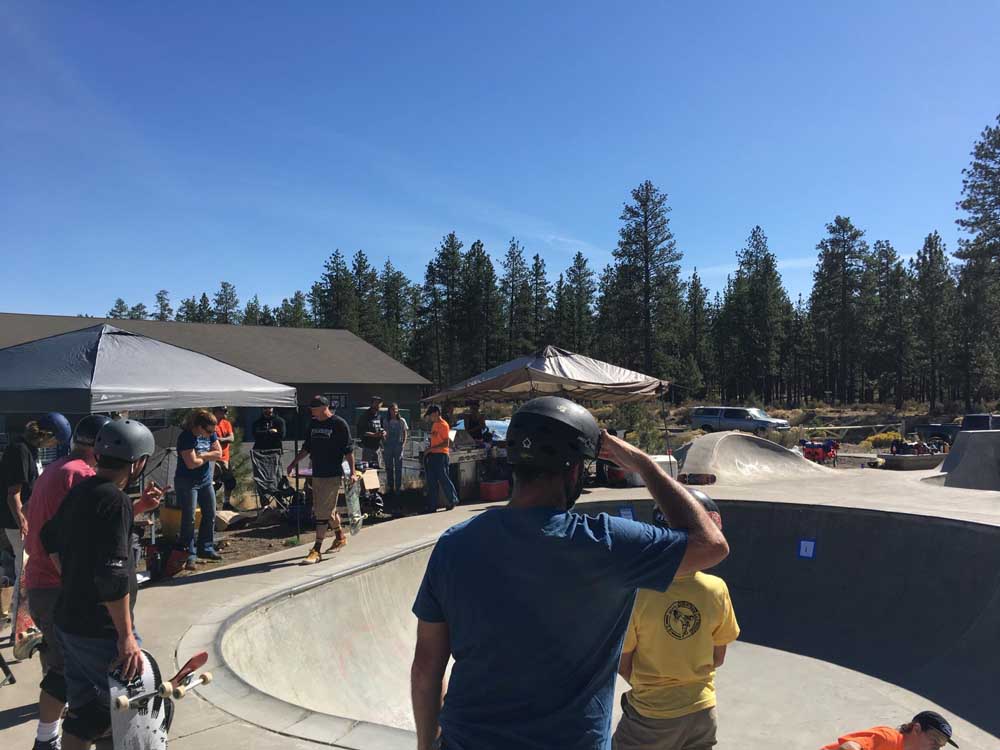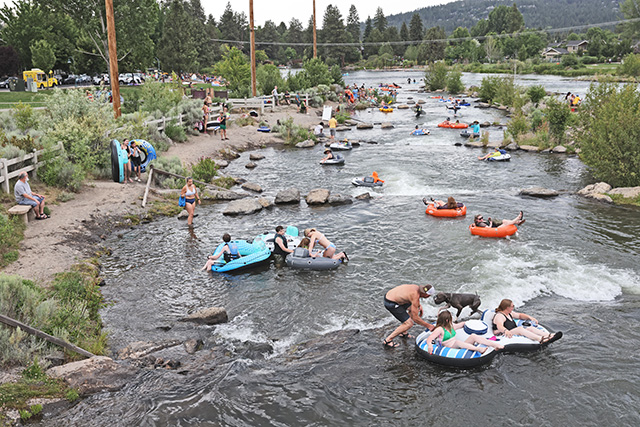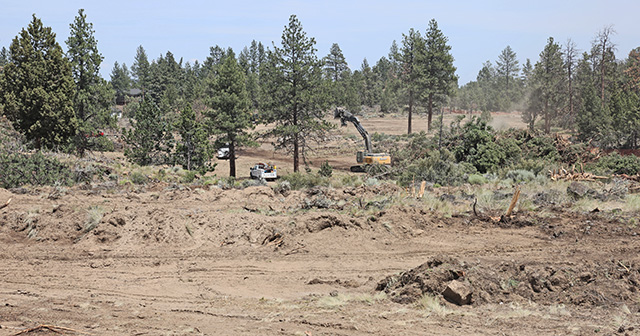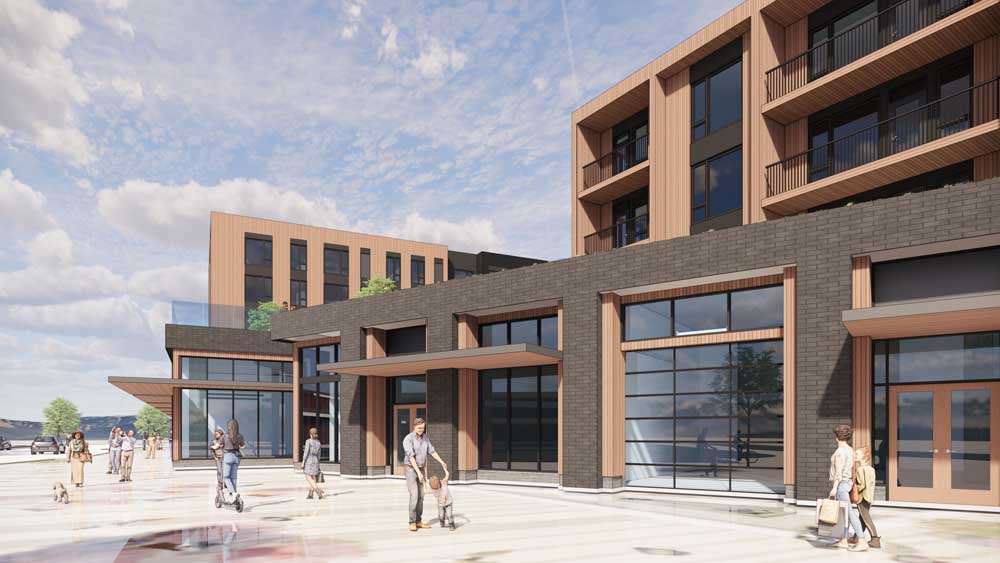Dropping in: You got your kid a scooter. Here’s what to expect at a skatepark
Published 3:30 pm Wednesday, April 24, 2024

- Skateboarders line the pool coping of Sisters Skatepark’s largest bowl during a 2021 fundraising event. The DIY park was designed and built by skaters, who also raised funds for it.
Some heated words were exchanged April 21 in a preventable user conflict at Sisters Skatepark. The mother of two young kids on scooters was upset after a couple of skaters corrected her kids, who were perching on the coping, dropping into bowls at random and generally going against the flow of things. (Note: I was not the skater who spoke to the kids or their mom, and was only within earshot part of the time.)
As more and more non-skateboarders find their way onto the inviting banks, ramps, rails, ledges and bowls that skateparks, which were designed and built for skateboarding, there is often an accompanying lack of awareness, even apathy, about how to go with the flow and avoid such conflicts.
If you’re the parent of a little kid with a new scooter, or even if your child has been riding for a bit, I implore you to read this. I’ve been skating 41 years, the first two decades before, and the second two since, the advent of the modern skatepark era. I’m a parent myself, and I don’t want to see your kid hurt — nor do I or any of my fellow skaters particularly want to get yelled at by defensive mama or papa bears.
A skatepark is not a playground
First and foremost: A skatepark is an ecosystem. No two skateparks are exactly alike, nor are their cultures. So take a moment to get the lay of the land before you dive in. That goes for both parents and kids. You may think because it’s in a city park that any behavior is fair game at a skatepark, but that thinking is wrong and will lead to problems.
Skating has a longstanding tradition, it’s fairly dangerous and skateparks get crowded. Etiquette has developed out of necessity.
A skatepark is not a playground. Young, inexperienced scooter kids and skateboarders often have a kind of tunnel vision. They may see the obstacle or goal in front of them, but also lack awareness of the bigger picture and all the moving parts around them.
Skateparks more often than not need adult assistance in understanding. Which brings me to another point: They aren’t daycares. When you arrive at a park with your kid, don’t just drop them off. Even after they’ve been there a few times, a single skatepark can have a different character depending on the day or time. If you show up at 4 p.m. on a sunny weekday, chances are good it’s going to be busier.
Controlled chaos
It may look frenzied, but the activity taking place is a controlled chaos. Rather than jump right in, watch for 15 or 20 minutes. Parks have flow, and a lot of times, like at Ponderosa Skatepark in Bend, you can watch and see how the majority of skaters become predictable in where they’re going, often trying a trick over and over again in the same spot and returning to their starting point.
Fortunately, if you pay attention and have spatial awareness, it’s not that difficult to understand these patterns. That means you, too, parents. Stay with your children, hang back and observe. Talk about what you’re noticing. A good rule of thumb would be to go with the flow, and not ride in ways that go counter to what others are doing.
Get off the coping
Speaking of trying to stay out of people’s way: Get off the coping. That would be the concrete or metal lip of a bowl or ramp. For whatever reason, the M.O. in the young scooter community is to perch on the coping to wait for their turn. I don’t know how or why they don’t seem to get in one another’s way, but they are certainly in a skater’s way. It’s discourteous, dangerous, unwise, and nothing draws skateboarder venom like a kid on a scooter perched on the coping during said skater’s run.
Where do skaters get off having this sense of ownership? Glad you asked.
After skating’s long stretch in the underground through the ’80s and most of the ’90s, many skaters have worked hard over the last 25 years to help get skateboarding into public parks, where they deserve a place to practice as much as any other activity. So in a lot of skaters’ minds, scooters are guests at the skatepark at best, interlopers at worst. This attitude is reflected in park rules, usually posted near the entrance. Some parks allow all types of riding. Some don’t allow bikes, and some don’t even allow scooters.
Some skaters will be friendly and encouraging, or at least willing to patiently explain the basics. (“Get off the coping.”) The odds of encountering more convivial types go down if a skatepark is more crowded. At peak-use hours, you’ll run into a skatepark full of core, experienced skateboarders in no mood for kids who are unaware of the rhythms of a skatepark, or their angry parents who, in a different setting, would ask to speak to the manager.
There is no manager at the skatepark, sir or ma’am. However, believe it or not, no skaters want to collide with your tyke, nor have a run-in with a surly parent who doesn’t understand the culture, rhythms or etiquette at a skatepark themselves.
Wait your turn (off of the coping). Snaking — that is, going out of turn — is a problem we all have to contend with. If five people are skating a bowl and you start to see a person or two getting another run before you’ve taken a turn, get on that coping and let it be known you’re taking some runs, too, dammit.
If all else fails, when you’re a
beginner or feeling unwelcome, sometimes it’s best to just go to a part of the park that’s not being used, or to try to ride during times the park is less crowded.
Overall, observe and learn.







